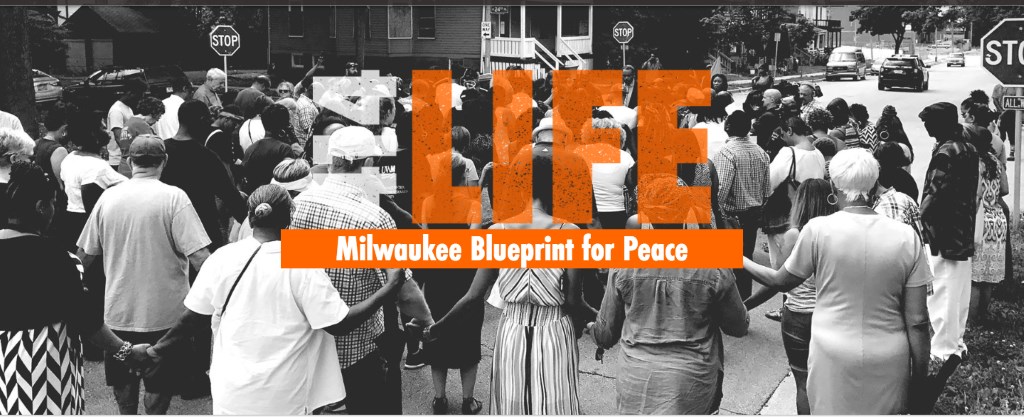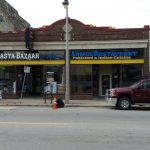City Blueprint for Peace Is Must Read
It’s surprisingly powerful. And could help change how we live.
Let’s make the goal of this piece clear up front. I dare you to read the Milwaukee Blueprint for Peace! Matter of fact, I double-dog dare you. (I hope that phrase isn’t offensive now.)
Trust me Family, as a so-called academic I know how hard it is to read through policy reports and other wonky documents. One of the reasons so many bills in state legislatures and Congress slide through with disastrous provisions is simply because nobody wants to read all that junk; except the overly ambitious intern who probably does a cursory skim at best.
The Office of Violence Prevention though deserves a shout-out for the Milwaukee Blueprint for Peace. It’s deeply informative, while also digestible and concise. It was informed by an exhaustive number of community experts leaning in to address a vexing problem, but does not absolve government of its roles and responsibilities. And, most importantly, it calls for a re-imagination of how to address the myriad forms of violence that weaken our families and communities, while also acknowledging how massive a job the Office of Violence Prevention is called upon to do.
Many of us are going to say, “I know that information already…” Maybe. Others of us won’t even bother making the false promise. Much appreciated. Nonetheless, here are three reasons why we each should take a few minutes and read or reread “The Blueprint.”
#1 – The Blueprint Educates
The Blueprint synthesizes and contextualizes data and information that explains – indeed complicates – our collective understanding of violence. The Blueprint defines and highlights the collective toll exacted by gun and gang violence, domestic violence, sexual violence, child abuse, drug-related violence, self-inflicted violence and structural violence. For many, the inclusion of structural violence alongside the other types is a welcomed, albeit longstanding, critique of our broader society.
This more sophisticated understanding is profoundly important because the path to a healthier, less violent city requires the appropriate redress of issues that go well beyond demanding young people behave better or administering token reforms within the criminal justice apparatus. Explaining these disparate forms of violence as part of a larger social exhibition confirms this as a vast American problem and public health crisis. Few will disagree that “The injury, pain, and trauma that results from violence can severely impact the physical and mental well-being and sense of worth and safety of individuals and communities.” For those living in poverty, they know all too well that “Poverty is traumatic. Segregation is traumatic. Experiencing life as a ‘have not’ among ‘haves’ is traumatic.” The Blueprint outlines the depth of violence we experience in our lives, both seen and unseen, immediate and gradual, personal and structural.
#2 – Cross-Sector Implementation is the Only Way
No singular office or agency can address this hydra. Police forces have failed to significantly reduce violence despite the criminalization of masses of people and despite full scale militarization. Government has failed to undo patterns of structural violence, and will continue to double down on the practices that propel structural violence given its never-ending appetite for capital.
A defining value of The Blueprint is its commitment to mobilizing existing strategies while making space for emerging alliances and creative ideas to thrive. In this respect, The Blueprint maximizes the knowledge housed at the grassroots level, calling on the vast array of more imaginative community reservoirs. This approach allows it to be “a living guide that can be responsive and updated as issues, priorities, and effective ideas emerge.” The Blueprint also focuses its implementation efforts on priority neighborhoods, improving the likelihood of an impact.
#3 – Immediate Involvement
You can click here and join the effort. The OVP leadership team has and will remain open to collaborators, and we can each take part in the community programs and events currently underway. We can each make the decision to take part right now, in whatever ways we can contribute to the solution development process.
Look Fam’, our nation is deeply committed to violence. It is a defining narrative in the American experience beginning with examples like chattel slavery and even with our celebration of the American Revolution. Indeed, our nation’s commitment to violence is put on display every weekend throughout the fall and winter. So, Thursday, Friday, Saturday, Sunday and Monday as we boldly celebrate that bloodlust, it is possible for those truly interested, “…to join together to meet this moment of urgency and opportunity to make Milwaukee one of the safest cities in the country,” because we can read The Blueprint.
Dr. Robert S. Smith, Harry G. John Professor of History and the director of the Center for Urban Research, Teaching & Outreach at Marquette University.
This story was originally published by Milwaukee Neighborhood News Service, where you can find other stories reporting on eighteen city neighborhoods in Milwaukee.
Op-Ed
-
Wisconsin Candidates Decry Money in Politics, Plan to Raise Tons of It
 Dec 15th, 2025 by Ruth Conniff
Dec 15th, 2025 by Ruth Conniff
-
Trump Left Contraceptives to Rot; Women Pay the Price
 Dec 8th, 2025 by Dr. Shefaali Sharma
Dec 8th, 2025 by Dr. Shefaali Sharma
-
Why the Common Council’s Amended Budget is Good Policy for Milwaukee
 Nov 20th, 2025 by Alds. Marina Dimitrijevic and Russell W. Stamper, II
Nov 20th, 2025 by Alds. Marina Dimitrijevic and Russell W. Stamper, II























I read the Blueprint for Peace a few weeks ago and shared the following thoughts with Reggie Moore, the Director of the Office of Violence Prevention.
I was struck by how the Prevention Institute, which is funded by a major health care provider, Kaiser Permanente, was able to control the direction of the effort and steer it away from a Criminal Justice System Approach to a Public Health Approach. No surprise there.
The terms “War on Drugs” and “Drug War” do not appear in the Blueprint for Peace. Drug abuse and drug crime are mentioned peripherally but, because the Criminal Justice System was not included in the approach, the core issue of the impact of law enforcement on violence and crime in the context of the Drug War was not addressed.
On page 15 of the Blueprint For Peace it says:
* There were 6 (6.9%) drug-related homicides in 2014, 17 (11.6%) in 2015, and 6 (4.3%) in 2016. There were 29 (5.0%) drug-related shootings in 2014, 35 (5.5%) in 2015, and 16 (2.9) in 2016.
Milwaukee Homicide Commission reports cited to document these numbers differentiate between drug-related and drug-related-robbery homicides and drug-related and drug-related-robbery non-fatal shootings. The Blueprint for Peace only includes drug-related homicides and drug-related non-fatal shootings in the tallies listed above while failing to include the drug-related-robbery homicides and drug-related-robberies non-fatal shootings.
If we rewrite the Drug-related violence paragraph noted above to include drug-related-robbery homicides and drug-related-robberies non-fatal shootings we get the following:
* There were 13 (15.1%) drug-related homicides in 2014, 25 (17.2%) in 2015, and 15 (10.8%) in 2016. There were 60 (10.3%) drug-related shootings in 2014, 68 (10.7%) in 2015, and 36 (6.4) in 2016.
We can only guess how many argument driven, gang-related, retaliation or unknown homicides or non-fatal shootings were actually drug-related.
When homicides and non-fatal shootings from drug-related-robberies are included, the numbers show that War on Drugs is having a much more substantial impact on the level of gun violence in the City of Milwaukee than that portrayed in the Blueprint for Peace, which includes only drug-related homicides and non-fatal shootings.
The links below are to the 2014, 2015 and 2016 Milwaukee Homicide Commission Reports referenced in the Blueprint. If you want to check my numbers please note that the 2015 report had updated numbers for what happened in 2014 and likewise, the 2016 report had updated numbers for what happened in 2015, so I used the later reports to come up with my counts and percentages.
2014 https://city.milwaukee.gov/ImageLibrary/Groups/cityHRC/reports/2014AnnualReportV.2.5.pdf
2015 https://city.milwaukee.gov/ImageLibrary/Groups/cityHRC/reports/2015AnnualReportFINAL.pdf
2016 https://www.wpr.org/sites/default/files/2016%20MHRC%20Annual%20Report%209-29-2017%20FINAL.pdf
By inaccurately reporting “drug-related” homicides and non-fatal shootings, completely ignoring the War on Drugs and explicitly NOT including the Criminal Justice System in the report, the document is a Blueprint for Failure, not a Blueprint for Peace.